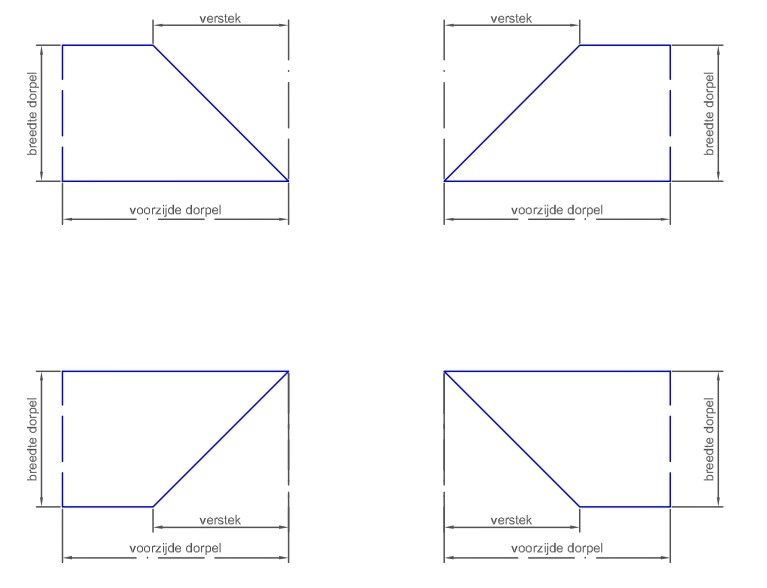What is a door threshold ?
A door threshold, is the horizontal element placed at the bottom of a door, usually at the transition between interior and exterior spaces. It serves multiple functions:
1. Sealing and insulation: The door threshold helps seal the space under the door, keeping out drafts, cold air, and moisture. This contributes to the thermal insulation of the building and can reduce energy loss.
2. Water drainage: Especially for exterior doors, the door threshold is important for the drainage of rainwater. By directing the water away, the door threshold prevents water from seeping in under the door, which can prevent water damage to the floor and interior.
3. Protection of the underside of the door: Door thresholds protect the bottom of the door from damage caused by moisture, dirt or impact. This is important for the life of the door, especially on wooden doors that are sensitive to moisture.
4. Damping and sound insulation: Door thresholds can also help dampen sounds and improve sound insulation between different rooms, especially when they are part of a door with good seals.
5. Aesthetic function: In addition to its practical benefits, a door threshold also contributes to the aesthetic finish of a door and the surrounding floor. It provides a neat transition and can contribute to the appearance of the interior or exterior.
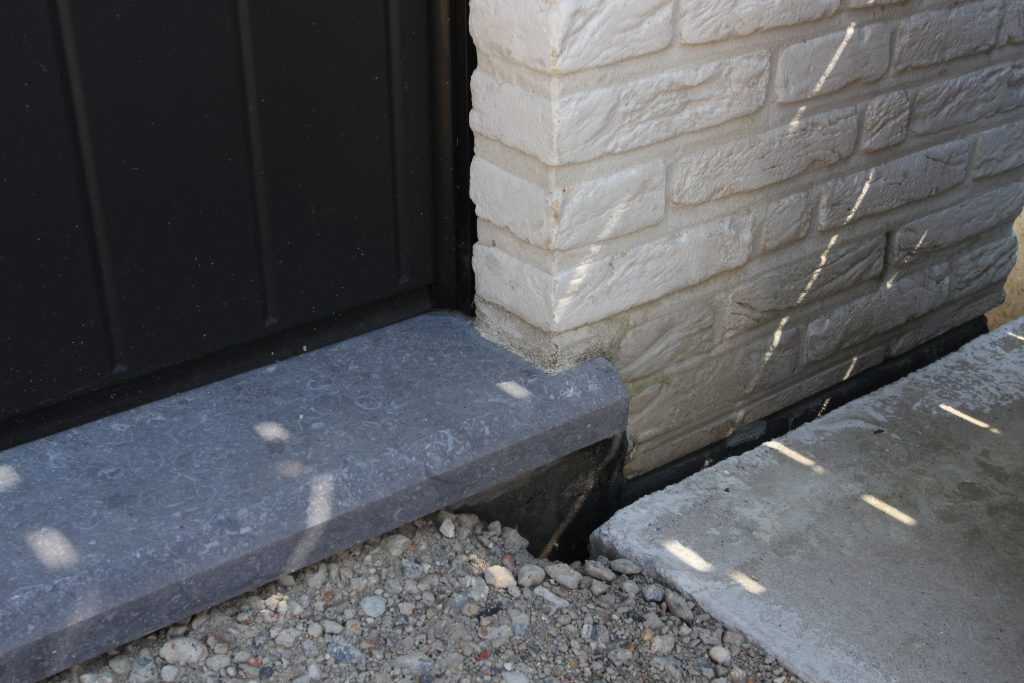
Why a door threshold in natural stone ?
A door threshold made of natural stone is often chosen because of the following advantages:
1. Sustainability: Natural stone is a very robust and hard-wearing material. It copes well with intensive use and is resistant to wear and tear, impacts, and scratches. As a result, a natural stone door threshold often lasts for decades without significant loss of quality.
2. Weatherproofing: Natural stone is highly resistant to various weather conditions, such as rain, frost, and sun. This makes it an excellent choice for exterior door thresholds, where the material is continually exposed to the elements without rapid wear and tear or discoloration.
3. Maintainability: Natural stone is relatively easy to maintain. It is resistant to dirt and stains, and can be easily cleaned with simple detergents. This makes it a practical choice for both indoor and outdoor applications.
4. Aesthetics: Natural stone has a timeless and luxurious look. It is available in a variety of colors, textures, and finishes, making it easy to choose a sill to match a building's style. Whether it's a modern, classic, or rustic look, natural stone offers plenty of variety.
5. Valuation: Using high-quality materials such as natural stone can increase the value of a property. This is because natural stone is associated with quality and durability, which is attractive to potential buyers or tenants.
6. Water drainage: The density and smooth surface of natural stone allow water to flow easily away from the threshold, which is important to prevent water from accumulating and causing damage.
7. Environmental Friendliness: Natural stone is a natural material that is mined locally and processed in an environmentally friendly way.
![]()
In summary, a natural stone door threshold offers a combination of durability, aesthetics and functionality, making it a popular choice for both interior and exterior applications.
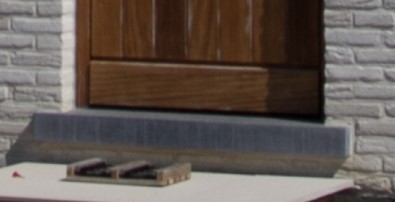
Door sill with matching door frame
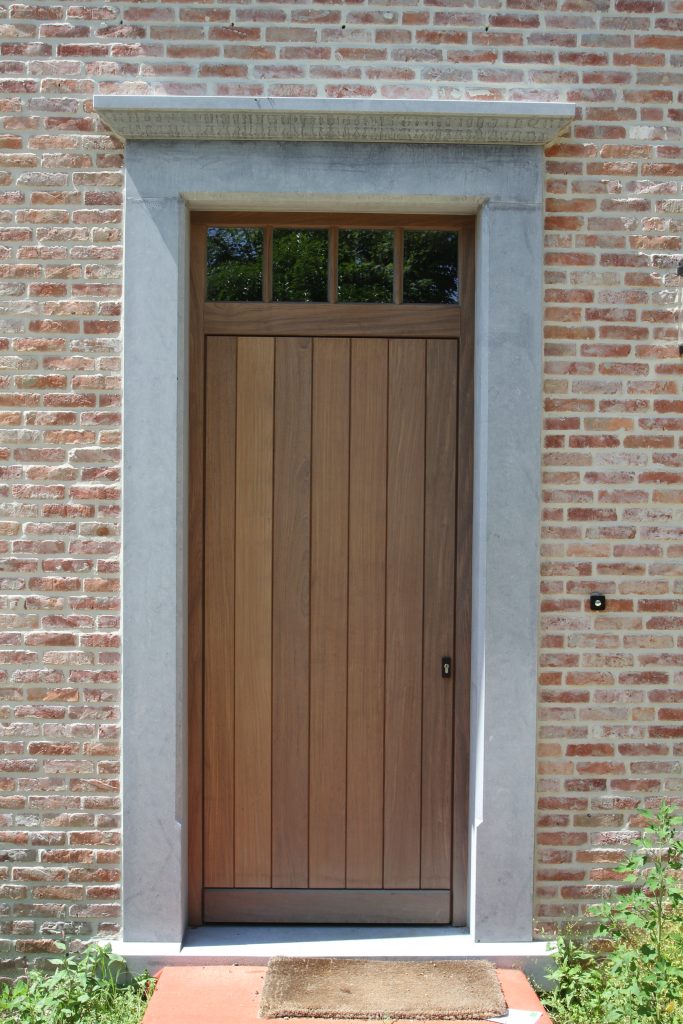
We distinguish 2 types :
Flat
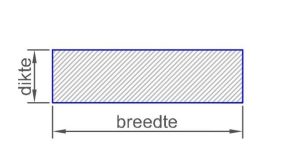
A flat door threshold is chosen for several reasons:
1. Accessibility: A flat door threshold makes passage easier, especially for people with mobility limitations, such as wheelchair users or those with walkers. It minimizes obstacles and makes it easier to step or drive over the threshold.
2. Modern aesthetics: Flat door thresholds contribute to the clean, modern look of a room. They fit well with contemporary architecture, where minimalist and seamless designs are often preferred.
3. Seamless transition: Flat door thresholds provide a seamless transition between interior and exterior spaces or between different rooms. This is especially important in open spaces or where a visually continuous floor area is desired.
4. Reduced trip hazard: A flat threshold reduces the risk of tripping, which is especially important in areas where many people pass, such as public buildings or crowded homes.
5. Suitable for sliding doors: Flat door thresholds are often used on sliding doors to ensure that the door can move smoothly over the threshold without obstacles.
6. Maintainability: Because there is no raised edge, a flat door threshold is easier to keep clean. Less dirt and dust remain, which is especially useful in crowded environments.
7. Compatibility with underfloor heating: In combination with underfloor heating, a flat door threshold can provide even heat distribution without cold bridges, contributing to a comfortable indoor environment.
In short, a flat door threshold offers functional benefits in terms of accessibility, safety, and aesthetics, making it a practical choice for many modern buildings and homes.
Flat with upstand
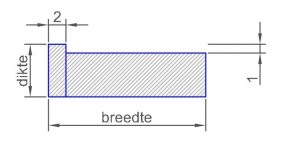
A flat door threshold with raised edge is chosen for specific functional and aesthetic reasons:
1. Improved water barrier: The upstand, a small raised edge at the edge of the sill, helps to hold back water. This is especially important on exterior doors, where the upstand prevents rainwater from seeping in, while the sill itself remains flat for easy passage.
2. Preventing drafts and dirt: In addition to blocking water, the up-side also helps keep out drafts and dirt. The upstand acts as a barrier that prevents wind, dust, and other unwanted elements from penetrating under the door.
3. Maintaining accessibility: Despite the presence of an upstand, the threshold remains flat and easily accessible. This means that the passage still remains barrier-free or nearly barrier-free, which is important for wheelchair users and other people with mobility impairments.
4. Aesthetics and finishing: The threshold can contribute to a clean and finished look of the door and surrounding floor. It provides a neat transition between the floor and the door without the sill being too prominent.
5. Protection of the door and floor: The upstand provides additional protection against damage to the bottom of the door and to the floor inside. It prevents water, dirt or other material from accumulating directly under the door, which in the long run can extend the life of both the door and the floor.
6. Easy installation: A flat door threshold with an upstand can be easier to install than a fully raised threshold, while still providing the necessary protection from the elements.
In summary, a flat door threshold with an upstand offers a combination of accessibility, water resistance, and protection, making it a practical choice for situations where both convenience and protection from the elements are important.
Our door thresholds are made with a drip groove of 0.6 x 0.6cm, 2cm from front, stops 2cm from machined heads.
In order to integrate our sills even better into the facade, there is also an option to have a sill with upstand cushions apply, partially or full width :
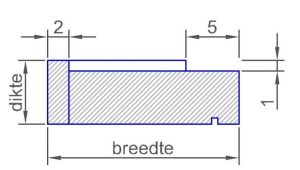
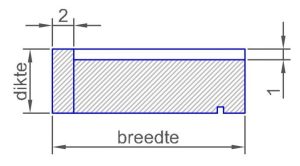
We also give the opportunity to obtain a mitered threshold , inside or outside
